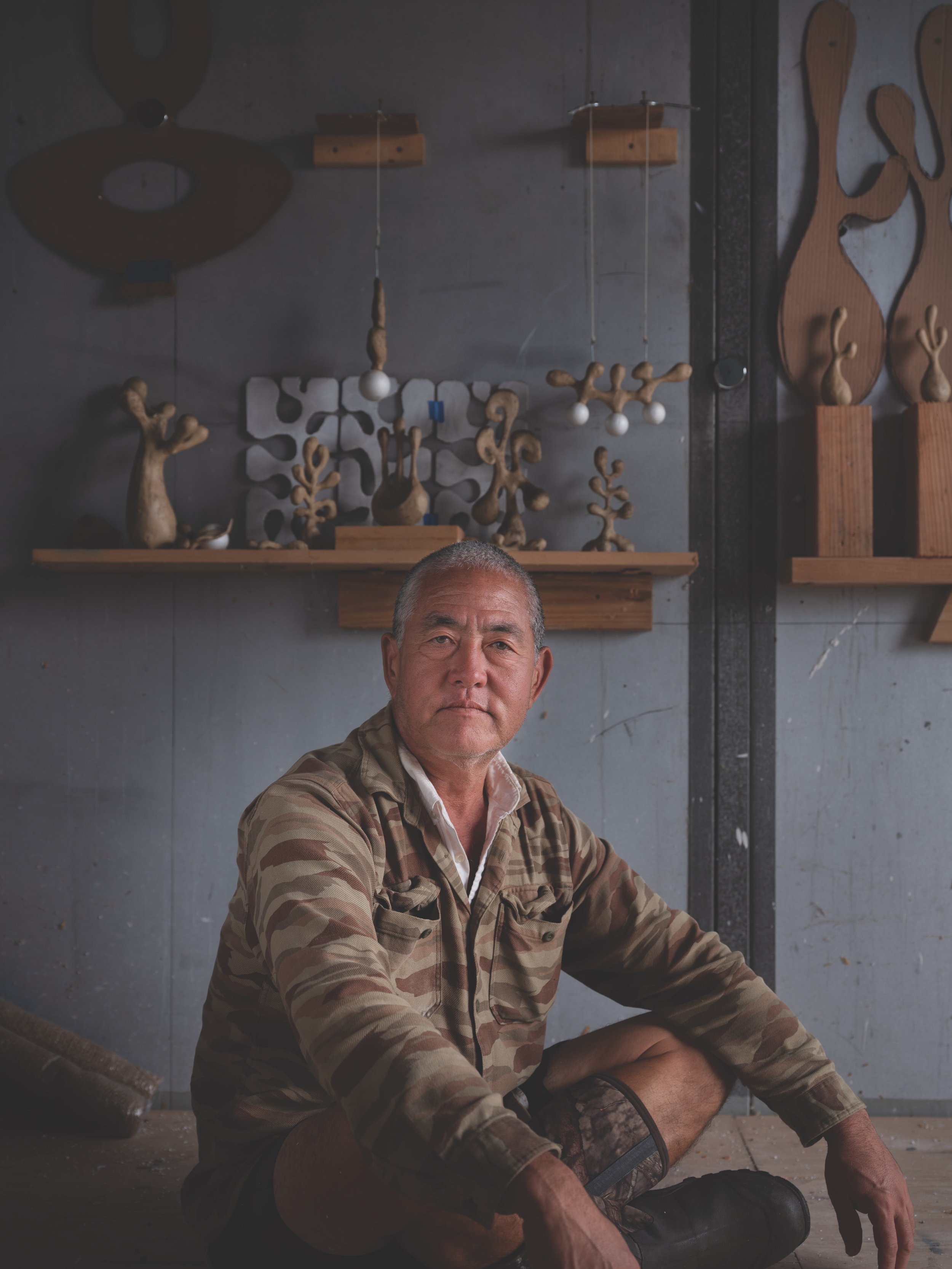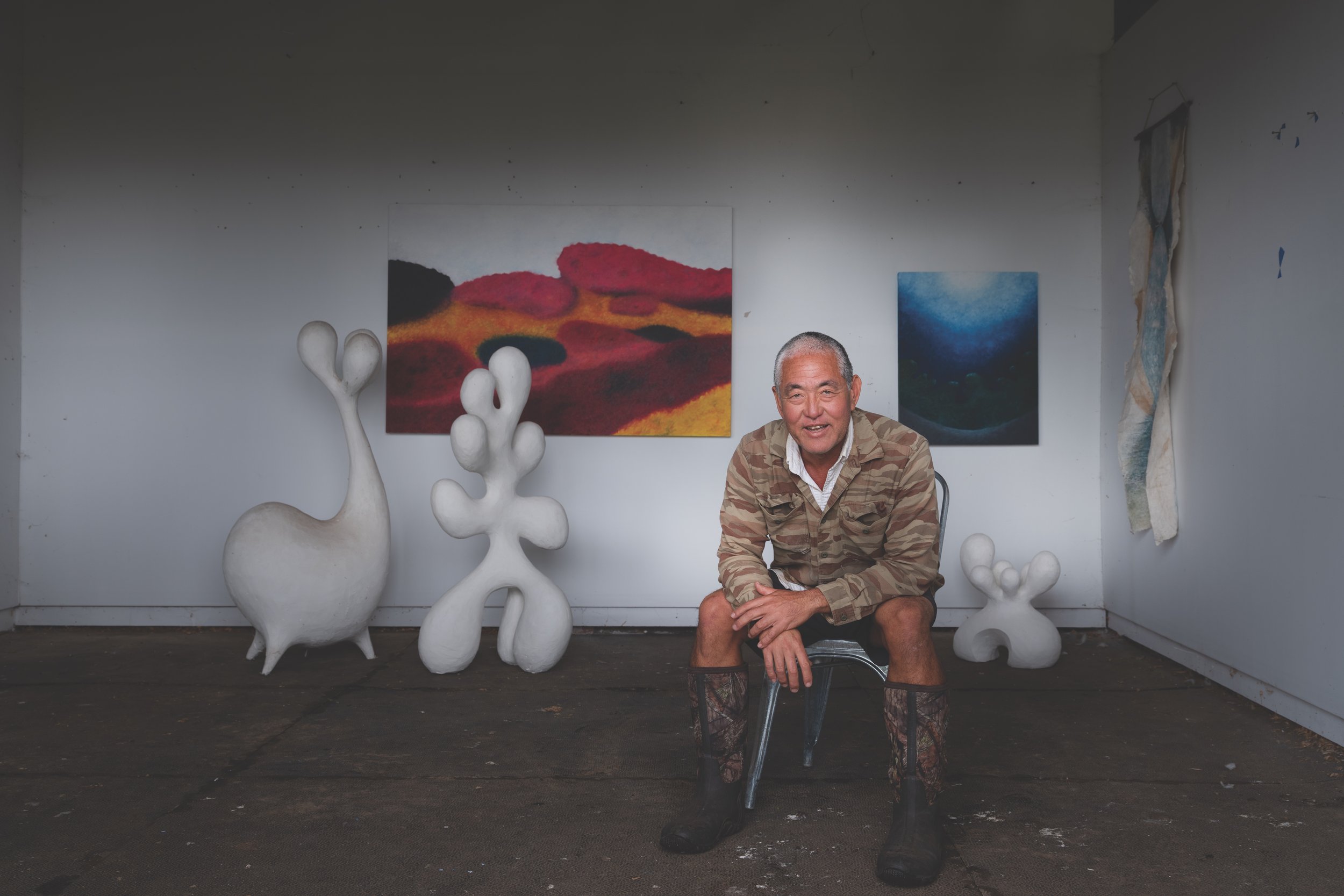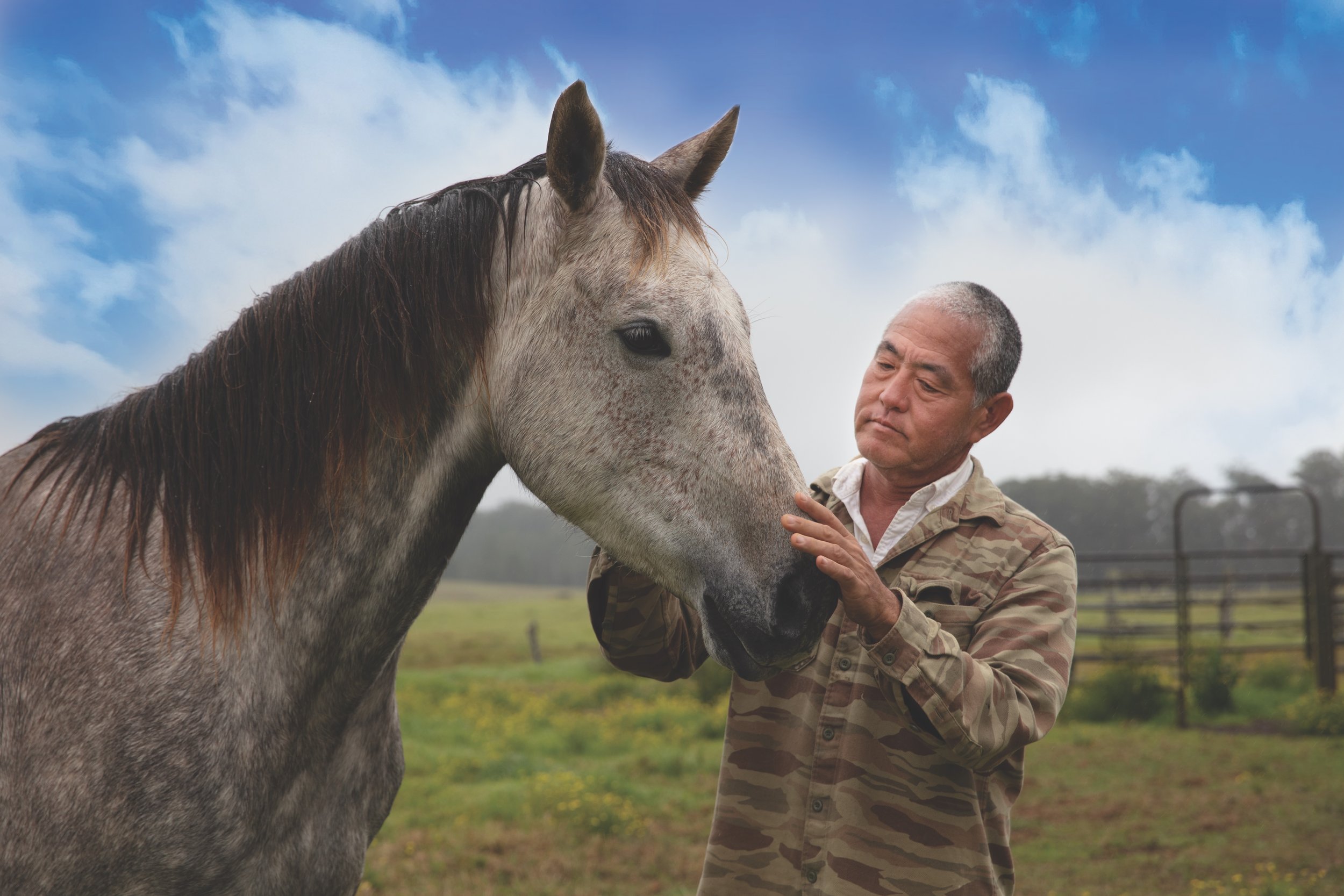Stable Movement



One would correctly surmise that the last thing a renowned artist needs is … yet another article talking about everything that’s been said before about their art, about the arc of their career, their early influences, past exhibits and upcoming installations, and, and, and … Kindly pardon me while I pause and think of a few more things not to write about here. And when the artist is John Koga, volumes have been said. Allow me to go out on a limb here: it is best to let each person approach his art — and if fortunate to meet him — to interpret the art and the artist on their own terms. Art — and artist — speak to each of us uniquely, through our own individual lenses.
For decades, John Koga’s art was conceptualized around his home, studio and gallery in Manoa Valley. Evolving over the years, it was tailored into his own personal space, designed and custom-built to serve the myriad needs of the established artist. Those who may have only recently discovered Koga and his work may have done so through Instagram, where @studiomanoa is his handle, reflective of the decades during which the valley studio served as the epicenter of his art and life.
Today, however, Koga’s creative milieu is miles away. Sensing a need to put some distance between the daily crush of urban living and his home and studio, Koga moved to Waimea on the Big Island. It wasn’t so much as seeking a new location to set up shop, but more of a return to a place that over the years, has provided more than just inspiration.
“My wife used to come here for work when the kids were little, and she would stay at the Kamuela Inn. She first said, ‘Let’s move to Waimea’ but I said, ‘What’s in Waimea?’ But then you drive through Waimea, and you see that there’s so much out here, so much history and knowledge. So much to learn and pass on,” Koga mentions.
Setting up his new studio outside of town, a short drive out into the rolling verdant hills, Koga mentions both the land surrounding him and the community that welcomed him. “Another part of my journey here is that coming from Honolulu, in being a city boy and being reconnected and understanding the value of being able to see and breathe again and learn again.”
Empty stable stalls at the end of a farm road were transformed into studio and gallery spaces for the artist. The continuum of his art can be seen from one end of the building to the other; tiny prototypes sit on shelves tacked to the easternmost end of the building, and from there, one can follow the progression of Koga’s creations, as they take shape, evolve and make their way to the western end, to be put on display. In one middle stall, canvases bear the marks of other hands; Koga has reserved one space for invited young artists to express themselves and explore art as solace for the mind.
What effect has this dramatic shift in studio location made on the artist and his art? Big or small, one might say that it is merely part of the ever-changing nature of an artist to constantly draw from the environment. When that changes from urban to rural, the natural forms and shapes only seem to be more reflective of that part of the island. Several years after settling into the new studio, a new rhythm has taken hold absent of the stresses and pressures of a prior urban setting, but it isn’t slower.
Far from being isolated in Waimea, Koga has found a welcoming community within which to share himself, his art and his wisdom. Just as his decades-long friendship with Satoru Abe has fostered a strong sense of mentorship in Koga, he now regularly finds the time to wholeheartedly give back to the town, its young artists and its well-established residents.
This new home for artist and studio has reconnected him to the land by surrounding him with even more of what he had before; daily doses of sunshine, rain, trade winds and the occasional rainbow. And for those who get the chance to appreciate Koga’s art, a few things that ought to be said are that his art will always remind us to not be afraid to keep moving forward, to explore new lands, to keep appreciating nature, and who we have around us. John Koga may have moved to solitude, but he is speaking as loudly as ever through his new work.
